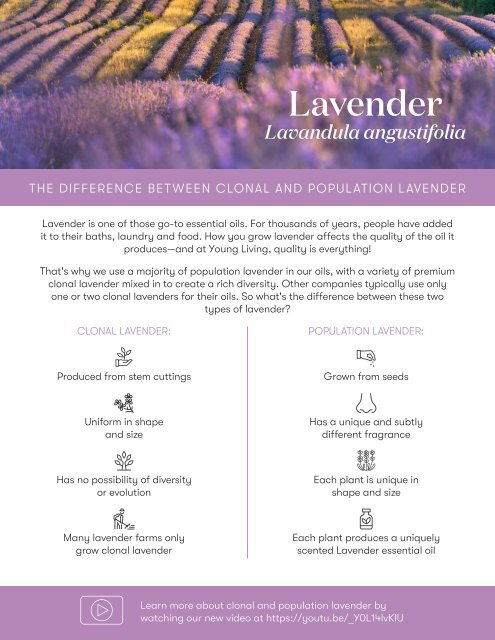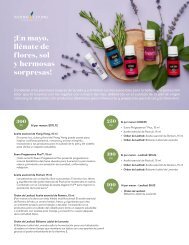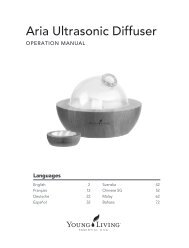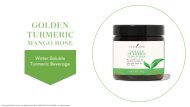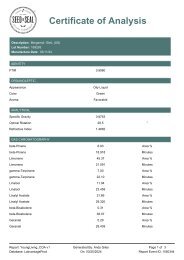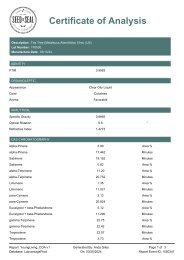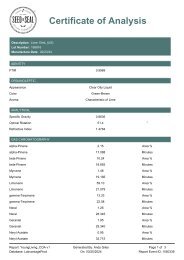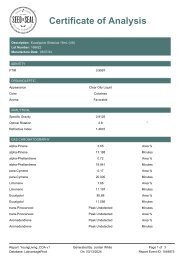Clonal and Population Lavender
Clonal and Population Lavender
Clonal and Population Lavender
Create successful ePaper yourself
Turn your PDF publications into a flip-book with our unique Google optimized e-Paper software.
<strong>Lavender</strong><br />
Lav<strong>and</strong>ula angustifolia<br />
THE DIFFERENCE BETWEEN CLONAL AND POPULATION LAVENDER<br />
<strong>Lavender</strong> is one of those go-to essential oils. For thous<strong>and</strong>s of years, people have added<br />
it to their baths, laundry <strong>and</strong> food. How you grow lavender affects the quality of the oil it<br />
produces—<strong>and</strong> at Young Living, quality is everything!<br />
That's why we use a majority of population lavender in our oils, with a variety of premium<br />
clonal lavender mixed in to create a rich diversity. Other companies typically use only<br />
one or two clonal lavenders for their oils. So what's the difference between these two<br />
types of lavender?<br />
Produced from stem cuttings<br />
Grown from seeds<br />
Uniform in shape<br />
<strong>and</strong> size<br />
Has a unique <strong>and</strong> subtly<br />
Has no possibility of diversity<br />
or evolution<br />
Each plant is unique in<br />
shape <strong>and</strong> size<br />
Many lavender farms only<br />
grow clonal lavender<br />
Each plant produces a uniquely<br />
scented <strong>Lavender</strong> essential oil<br />
Learn more about clonal <strong>and</strong> population lavender by<br />
watching our new video at https://youtu.be/_Y0L14lvKIU


